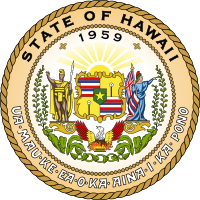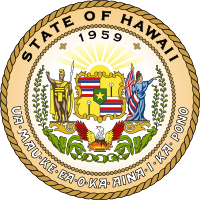The Rich History and Resilience of Hawai'i
Navigating Natural Disasters and Political Adversities with Aloha Spirit
Issue #387 Friday Funday August 18, 2023
Hawai'i, a tropical paradise in the Pacific Ocean, is renowned for its stunning landscapes, vibrant culture, and deep-rooted history. However, beneath that idyllic exterior lies a tumultuous past marked by significant natural and man-made disasters, as well as explosive political events, all of which reshaped its future over the centuries.
Hawai'i is an island state in the Western United States, about 2,000 miles from the U.S. mainland in the Pacific Ocean. It is the only U.S. state outside North America, the only state that is an archipelago (a group of islands), and the only state in the tropics.
The most deadly set of wildfires in U.S. history occurred in the historic city of Lahaina on the island of Maui on August 8, 2023. There is yet no official reason for the wildfires, but most people agree that their severity was increased because of climate change.
Before the arrival of European explorers, Hawai'i was a land of indigenous Polynesian settlers who established a unique culture and way of life. Ancient Hawaiians passed down their oral and dance history tradition through captivating legends and myths. These stories spoke of powerful gods, brave warriors, and the deep connection between the land and its people.
In 1778, British explorer Captain James Cook became the first European to set foot in Hawai'i. This encounter opened the doors to increased trade and cultural exchange. Over time, Western influence grew, leading to the unification of the Hawaiian Islands under King Kamehameha the Great in 1810. The Kingdom of Hawai'i flourished, attracting traders, missionaries, and adventurers from around the world.
An influx of European and American explorers, traders, and whalers soon arrived, leading to the decimation of the once isolated Indigenous community through the introduction of diseases such as syphilis, tuberculosis, smallpox, and measles; the native Hawaiian population declined from between 300,000 and one million to less than 40,000 by 1890.
Hawai'i remained independent until American and European businessmen overthrew the monarchy in 1893, which led to annexation by the U.S. in 1898.
Hawai'i's geographical location in the Pacific exposes it to various natural hazards. One of the most significant volcanic events occurred in 1790 when an eruption on Kilauea caused a deadly lava flow that devastated nearby villages.
In later centuries, the Hawaiian Islands experienced a series of powerful hurricanes, including the Great Kaua'i Hurricane of 1871 and the devastating Hurricane Iniki in 1992.
In 1959, Hawai'i became the 50th state of the United States. Statehood brought economic growth and development, but it also posed challenges to Hawaiian culture and identity. However, recently, there has been a resurgence of indigenous pride and a cultural renaissance, with efforts to preserve the Hawaiian language, traditional arts, and practices.
Let us know your thoughts about what new information you learned in the comments or in the Substack Notes feature.
You can always leave any questions in the comments or email us.
You can also receive up to six months of a paid subscription for referring people to us with the Share Button or the Refer Button.
Our goal is to make “We Are Speaking” into a multi-dimensional written and audio/visual publication and resource for you.
It will take financial resources to grow our publication.
Please consider becoming a paid subscriber for $5/month or less to access all of the articles, the entire archive, and other benefits.




